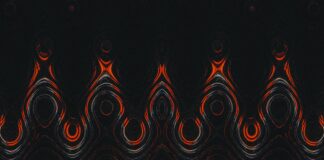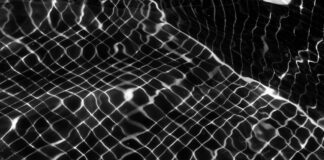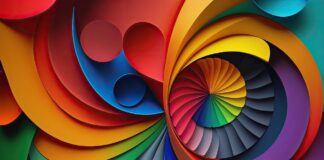AI in fashion product photography is transforming the way brands capture and showcase their products. The integration of artificial intelligence (AI) into photography workflows is revolutionizing fashion e-commerce by enhancing image quality, speeding up editing processes, and providing an overall better visual experience for customers. AI in fashion product photography is not just a trend; it’s a game-changer. From automatic image enhancement to predictive algorithms that recommend product placements, AI is enabling photographers and brands to achieve more efficient, consistent, and impactful results. In this article, we explore the top ten facts you must understand about AI in fashion product photography, which includes how it improves image quality, optimizes e-commerce processes, and sets the stage for future innovations in fashion photography.
1. AI Enhances Image Quality with Automated Editing
One of the most significant impacts AI has on fashion product photography is its ability to automate image enhancement. AI-powered tools are capable of automatically adjusting lighting, exposure, color balance, and sharpness. These tools analyze the images and make real-time adjustments that would traditionally take hours for a human editor to complete. For fashion brands, this means faster turnaround times for product image shoots and more consistent quality across all images. By relying on AI for automated editing, photographers can focus on the creative aspects of the shoot, while AI handles the technical aspects, ensuring that every product image looks polished and professional.
2. AI Streamlines Product Image Tagging and Categorization
When it comes to e-commerce, managing thousands of fashion product images can be a daunting task. AI simplifies this process by automating the image tagging and categorization, reducing the manual labor involved. AI systems can recognize product types, colors, textures, and patterns, then tag images accordingly. For example, AI can identify whether a product is a dress, shirt, or pair of shoes, and then assign the appropriate tags for quick categorization. This not only makes searching for specific products easier but also helps in organizing inventory efficiently, ultimately improving the shopping experience for consumers.
3. AI Optimizes E-commerce Platforms with Personalized Visuals
AI doesn’t just help with photography; it also plays a significant role in personalizing the shopping experience on e-commerce platforms. By analyzing customer behavior, preferences, and past purchases, AI can tailor the fashion product images displayed to individual users. For instance, if a customer frequently buys jackets, the AI can highlight jacket images more prominently when they visit a fashion retailer’s website. Personalized visual recommendations increase the likelihood of conversions and enhance the overall shopping experience, making it a powerful tool for fashion brands looking to boost sales.
4. AI Automates Background Removal in Fashion Photography
Background removal is a tedious yet essential task in fashion product photography. In traditional settings, photographers and editors would need to manually remove backgrounds to ensure that the product stands out. AI has automated this process by using advanced image recognition algorithms to detect and isolate products from their background with remarkable precision. Whether the product is on a plain white background or more complex settings, AI can efficiently remove backgrounds, saving photographers significant time while achieving consistent, high-quality results. This automation is particularly beneficial for fashion e-commerce sites, which often require clean, professional product images.
5. AI Improves Image Consistency Across Multiple Shoots
When a fashion brand shoots a product across different locations, with different photographers, or at various times, achieving consistency in the images can be challenging. AI solves this issue by analyzing multiple photos of the same product and adjusting them to match in terms of lighting, color temperature, and other visual elements. With AI, fashion brands can ensure that all product images across various platforms have a uniform look and feel, creating a cohesive visual experience that reinforces the brand identity.
6. AI Enhances Visual Storytelling in Fashion Photography
AI has revolutionized the way fashion product photography can tell a story. By analyzing customer behavior and preferences, AI can suggest creative ways to present a product that aligns with current fashion trends or specific customer interests. This allows fashion brands to produce images that not only showcase their products but also evoke emotions and connect with consumers on a deeper level. For example, AI-powered tools can recommend color schemes, product placements, and compositions that align with trending aesthetics, helping brands tell a more compelling story through their photography.
7. AI Assists in Predicting Fashion Photography Trends
AI’s ability to process and analyze vast amounts of data makes it an invaluable tool for predicting future trends in fashion photography. By examining trends from social media, fashion magazines, and e-commerce platforms, AI can identify emerging visual trends, including popular colors, poses, or photo compositions. Fashion brands can leverage this data to adjust their photography style in advance, ensuring their product imagery aligns with the next big thing. This predictive capability ensures that fashion brands are always one step ahead, capturing attention with relevant and timely visuals.
8. AI-Driven Virtual Try-Ons in Fashion Photography
One of the most exciting innovations in AI and fashion product photography is the integration of virtual try-on technology. Using AI-powered augmented reality (AR), consumers can virtually “try on” fashion items like clothing and accessories using only photos of themselves or avatars. Fashion brands can incorporate these AI-driven virtual try-ons into their product photography, allowing customers to interact with the images in a more immersive way. This innovation not only improves the shopping experience but also reduces the rate of returns, as customers can get a better sense of how the product will look on them before making a purchase.
9. AI Enhances the Speed and Efficiency of Fashion Photography Workflows
The traditional workflow for fashion product photography can be slow and cumbersome, often involving numerous steps of shooting, editing, and revising. AI significantly speeds up this process by automating repetitive tasks like cropping, resizing, and adjusting exposure. As AI learns from each image and shoot, it becomes increasingly efficient, cutting down on the amount of manual intervention required. This leads to faster turnaround times, allowing fashion brands to launch products on their e-commerce platforms much more quickly. Additionally, the increased efficiency of AI-based photography workflows can save fashion brands both time and money.
10. AI Will Continuously Evolve Fashion Photography with Future Innovations
The future of AI in fashion product photography is incredibly promising. As AI technology continues to evolve, it will offer even more advanced features, such as real-time photo enhancements, more accurate product placement recommendations, and increasingly sophisticated virtual try-on capabilities. Furthermore, AI will enable fashion brands to capture high-quality product images in more unconventional and creative ways, which will likely lead to a more engaging and dynamic visual culture in fashion photography. As machine learning algorithms improve, AI will become a more integral part of fashion photography, revolutionizing the way products are captured, showcased, and sold.
Conclusion
AI is revolutionizing the fashion product photography landscape by automating many of the time-consuming tasks traditionally involved, from image editing to background removal. Additionally, it offers a wealth of tools for personalizing the shopping experience, predicting trends, and enhancing the visual appeal of fashion products. By understanding these top ten facts about AI in fashion product photography, fashion brands can stay ahead of the curve and optimize their workflows for better productivity, more consistent results, and enhanced customer experiences. The future of AI in fashion photography is bright, and as technology continues to improve, its impact on the fashion industry will only grow.














